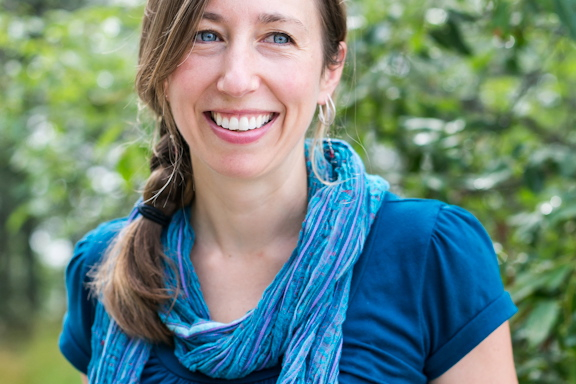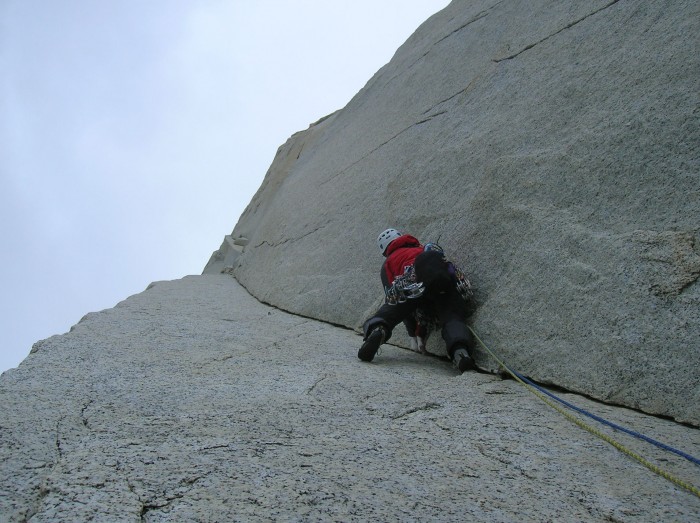Ladies we Love: Geologist Sarah Garlick

[This Ladies we Love profile is the seventh installment in our monthly series featuring the highly inspiring roster of female athlete ambassadors from Outdoor Research. They are skiers, climbers, mountaineers, and more—all breaking down barriers and pushing the edge.]
Sponsored Love from
Sarah Garlick has a passion for rock that extends far beyond holds, anchors, and bolts. The New Hampshire-based author of the award-winning book Flakes, Jugs, and Splitters: A Rock Climber’s Guide to Geology, Sarah is a recognized expert in the geology of the rock that climbers covet.
This brainy climber is also an educator and writer specializing in earth and environmental science who serves as the Director of Science, Policy, and Outreach for the Hubbard Brook Research Foundation. Here, we check in with Sarah Garlick to learn more about her passions, her best climbs, and the best types of rock to climb on.
WomensMovement.com: How did you get into rocks—and rock climbing?
Sarah Garlick: My focus on geology developed during my freshman year of college. At the time, I wasn’t even sure what geology was—just that it seemed like the path toward a career in the oil and gas industry or mining, neither of which I was interested in. But the geology courses looked great on paper so I took a chance. I lucked out with an incredible teacher in an intro class one of those teachers who changes the course of your life. She impressed on me how many big, fascinating questions about the Earth we still don’t know the answers to. I think I was registered as a geology major by the end of my first week of school.
My devotion to rock climbing took off about the same time. I’d known about climbing for a few years—my uncle was a climber and I’d wanted to get into it, but it was hard to break out of my social group in high school and do something that radically different (at least for my group of friends). But I got the chance to reinvent myself when I left home for college. I’d traveled from North Carolina, where I grew up, to Providence, Rhode Island, to attend Brown University.
I unpacked my stuff in my dorm room and then took a city bus to check out the boulders in Lincoln Woods State Park—I’d read in an orientation booklet that it was a climbing spot. I basically just wandered around the boulders with a pair of climbing shoes I’d owned but never worn, probably looking totally clueless, and I ended up meeting a few climbers who told me about the local gym. That was it—I was hooked. I spent the next four years of college working part time at the gym and obsessing over all things climbing.
WM: What are 3 of the climbing accomplishments of which you’re most proud?
Sarah: I’ve spent most of my climbing career focused on the sport as a tool for exploring wild places on the planet. From that perspective, a few moments stand out, including sharing a tiny bivy ledge with two girlfriends way up on a wall in Patagonia. With the wind and the exposure and the snow and ice, I remember feeling like we were pretty out there.
Another highlight was in Greenland with my husband and another couple—the moment our boat pulled into a fjord and we finally saw the Baroness, the wall that we’d come to climb. I’d put everything I had into researching that trip, gathering the team, and making it all happen—all the behind-the-scenes stuff that goes into leading an expedition that you never really hear about. That was a case where even just getting to the objective was a huge accomplishment.
In terms of more typical tick-list stuff, my friend and longtime climbing partner Janet Wilkinson and I were the first all-female team to climb La Esfinge, a granite wall in Peru, back in 2004 during our first international expedition. We were so green and so psyched—we climbed the 2000-foot Original Route in a day, on-sighting the crux pitches (at the time rated 5.11c, but these days most folks agree they’re more like 11- or 10+).
WM: What are your favorite rock surfaces to climb on?
Sarah: My favorite type of climbing is alpine rock climbing on granite terrain. I’ve only climbed in Patagonia during one trip, but I have this memory of the most perfect rock in the world being Patagonian granite. It has a texture that provides high friction without being too coarse, features that are aesthetic and naturally climbable, and cracks that take gear without a lot of fiddling.
I’m a crack climber at heart, so I also love the splitter cracks in the Utah desert. Sandstone isn’t always the most solid rock type, but the Wingate sandstone around Moab and the Canyonlands is spectacular. It’s a great place to train different crack climbing sizes and techniques.
WM: What’s your favorite, go-to energy snack that’s usually in your pack?
Sarah: I try to pack real, whole foods (vs. bars, gels, etc.) whenever I can—an almond butter and honey sandwich or a block of sharp cheddar and bakery bread. On the go, I like a mix of nuts, seeds, and dark chocolate.

Photo: Kristen Kremer
Kamagra oral jelly Online something to buy the most convenient way. He doesn’t demand from you any actions except how to visit the website. And in separate with goods necessary to you to put the end. To specify your address and to wait for the supplier to whom you will give money.



LET'S GET SOCIAL